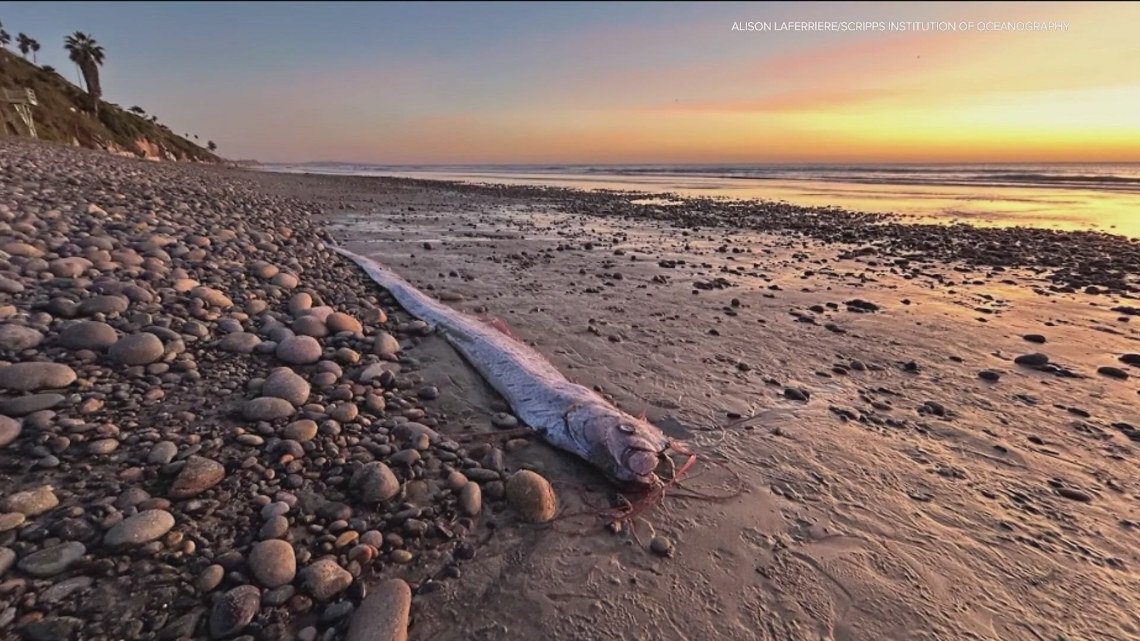Fashion
Mysterious ‘Doomsday Fish’ Washes Ashore in Encinitas

On November 6, a 9.5-foot oarfish was found washed ashore in Encinitas, marking the second sighting of the year in San Diego County.
Alison Laferriere, a graduate student at Scripps Institution of Oceanography, made the unexpected discovery while walking along the beach. “I thought, ‘Wow, this is amazing. I can’t believe there’s one right here,'” she expressed.
Such sightings of oarfish are incredibly rare. Fewer than two dozen of these deep-sea fish have been reported along California’s coastline over the past 120 years.
Ben Frable, a collection manager at Scripps, explained that these fish typically dwell at depths of 500 to over 1,000 feet, which is why encounters are infrequent. “They’re a kind of open ocean, generally deep-sea fish,” Frable noted.
The oarfish has been forwarded to the Southwest Fisheries Science Center for further examination. Researchers aim to uncover the circumstances of its arrival on the beach through dissection and analysis.
Michael Drexler, a fisheries scientist at Ocean Conservancy, suggested multiple reasons might explain the fish’s presence on land. “Fish, like all animals, are going to look for things to eat, comfortable places to live, mates and food… my guess would be this oarfish is looking for either of those things or maybe sick and veered off course,” he stated.
The oarfish has garnered a peculiar reputation as a “doomsday fish,” stemming from a Japanese legend that they surface to signal impending disasters. However, Drexler clarified that no scientific correlation has been found between oarfish appearances and disasters on the West Coast.
While oarfish are not endangered, they stand out for their size, with some reaching lengths of up to 35 feet. “They’re actually the largest non-shark fish,” Frable added.
This finding follows another sighting in La Jolla in August, where researchers found no clear cause for that individual’s death.
Once the examination of this latest specimen is completed, it will be incorporated into the Scripps collection, enriching ongoing research into these remarkable deep-sea creatures.


















